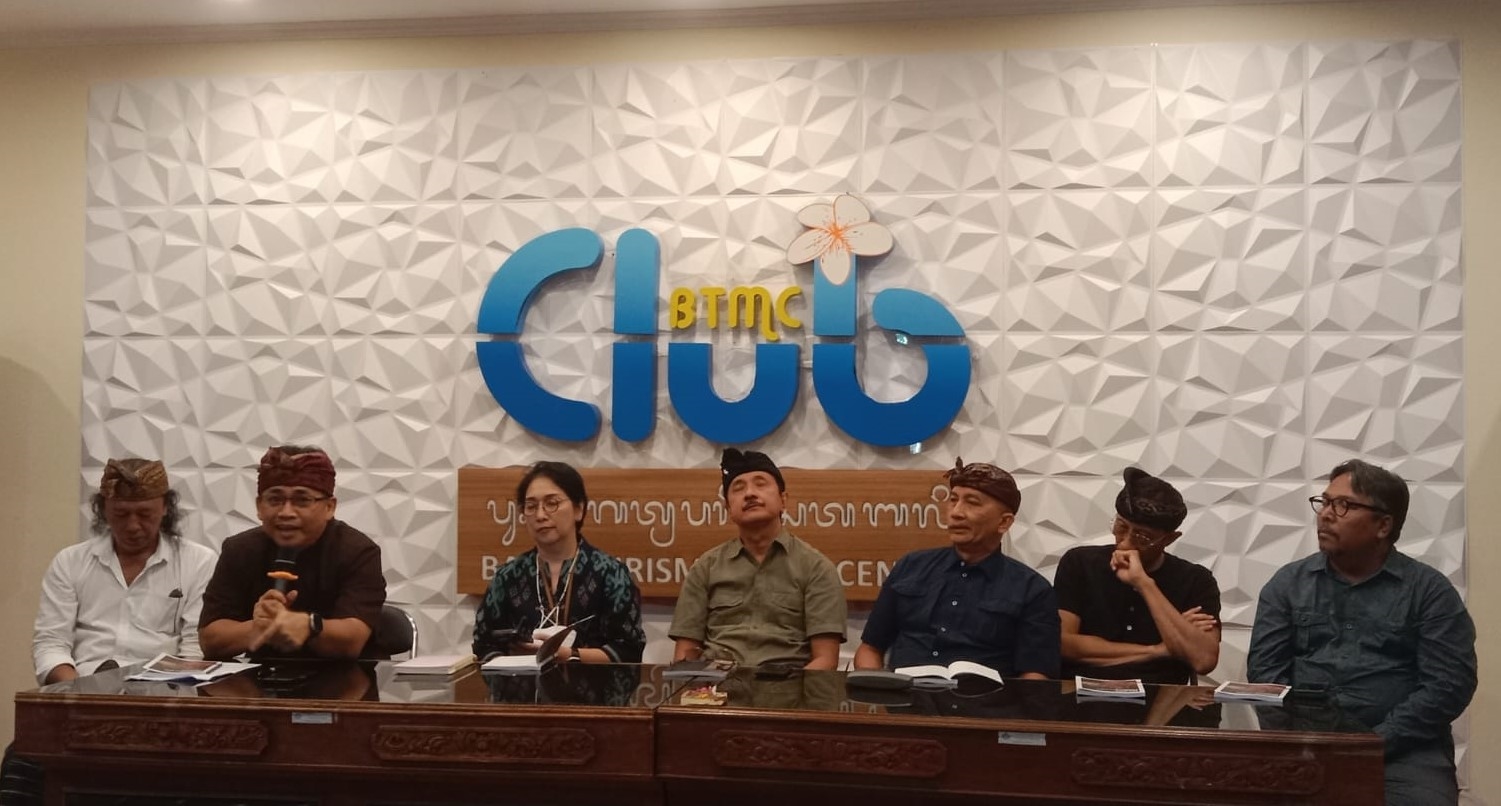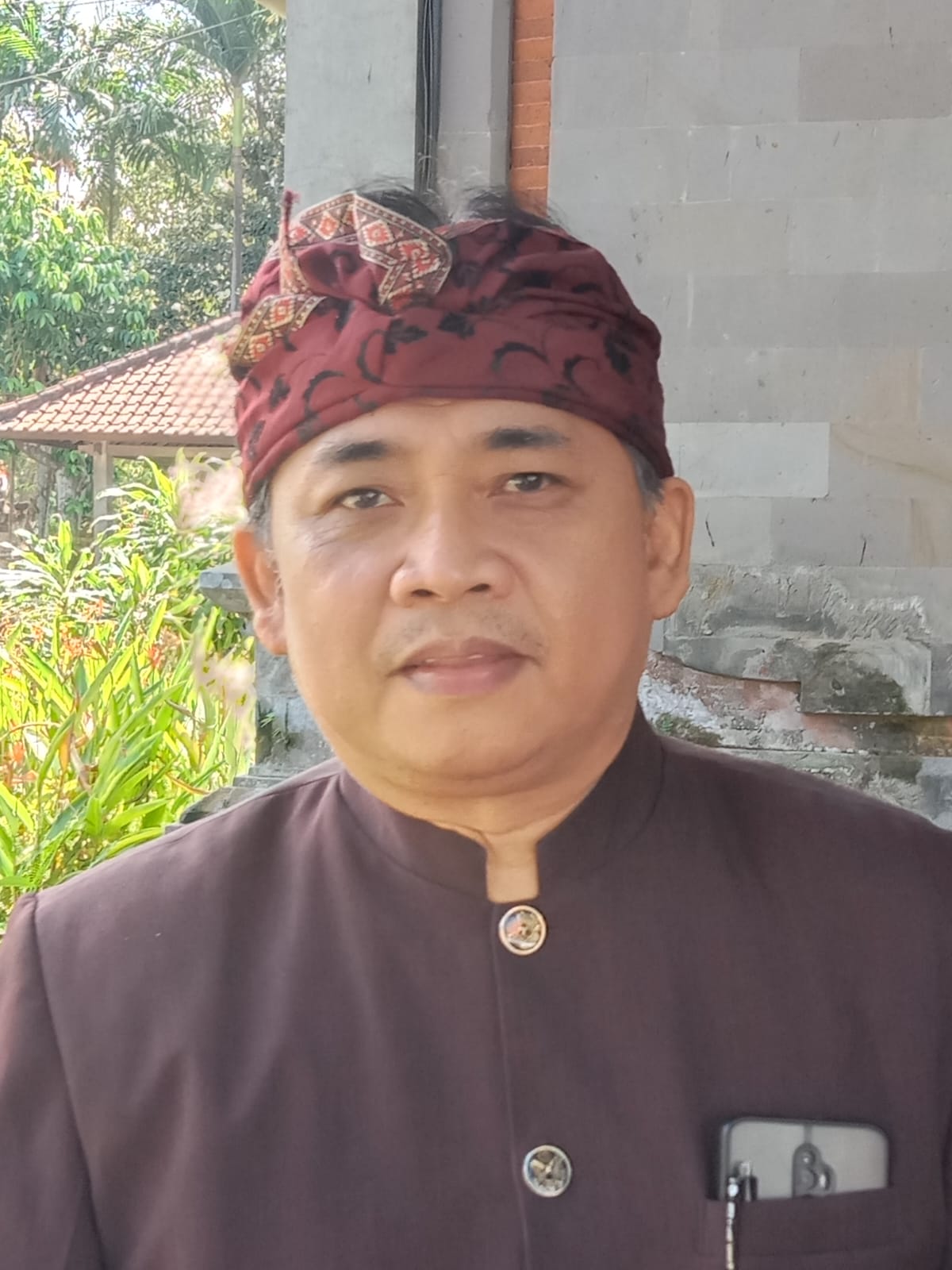DENPASAR, ULTIMOPARADISO.COM – The Bali Provincial Tourism Office finally held a socialization and launch of the Net Zero Energy Building (NZEB) catalogue and handed over Green Tourism Village certificates at the Etna Building, Bali Tourism Office on Thursday, 20 June 2024. Eight (8) villages became winners Green Tourism Village Based on Rating Tools DeWiKu v. 1.0 Developed by Dr. Ir, Dedy .Kurniawan (DK) Halim, Ph.D. The 8 villages that received the award were Taro, Penglipuran, Blimbingsari, Jasri, Pinge, Munduk, Medewi and Bongan villages.
Present at the event were the Director of Destination Management at the Ministry of Tourism and Creative Economy, Florida Pardosi, Head of the Bali Provincial Tourism Office, Tjok Bagus Pemayun, Head of the Bali Province Manpower and Energy and Mineral Resources Service, Ir. Ida Bagus Setiawan, ST., M.Sc. Head of PUPR and Residential Areas of Bali Province, Nusakti Yasa Weda, Head of the Environment and Forestry Service (DLHK) Bali Province I Made Teja, Director of the Bali Development Fund (BDF), Made Gunawirawan, Country Director of the World Resource Institute – Indonesia (WRI), Dr. Cokorda Nirarta Samadhi, Director of Indonesian Renewable Stars (BTI), Ngurah Erlangga, Chairman of Forkom Dewi Bali, Made Mendra, Heads of Tourism Services in all Regencies/Cities in Bali, Heads of PUPR Services in all Regencies/Cities in Bali, A number of Village Heads and certified Green Tourism Village Manager and media observer of Bali tourism.
Head of the Bali Tourism Office, Tjok Bagus Pemayun, on that occasion expressed his gratitude for the launch of the Net Zero Energy Building Catalog along with the handing over of Green Tourism Village Certificates (DWH) to 8 tourist villages that succeeded in achieving the highest green score based on the DeWiKu Rating Tools v. 1.0 developed by Dr. Ir, D.K. Halim, Ph.D.Tjok Pemayun also expressed appreciation to the winners of the Net Zero design competition for 4 sectors, namely Tourism which includes Homes & Villas, Traditional Landscape which is often found in Tourist Villages, Housing and Imaginative.
“The Tourism Office really supports the initiative carried out by WRI-BTI in the context of Net Zero Emission (NZE) or carbon neutrality because it is in line with the Bali Province Tourism Office program which is promoting green tourism villages that are pro-environment and help preserve natural resources including renewable energy in this era. “climate change,” explained Tjok Bagus Pemayun.
He further said that tourist villages are still relatively beautiful, have a wealth of natural vegetation which is able to absorb carbon emissions in tourist villages. Therefore, the commitment of tourist village managers is needed to maintain the proportion of green space and built-up area coefficient (KWT) to remain below 30%, namely by utilizing residents’ houses that have been built into homestays or tourist cottages and not building new hotels or tourist accommodation in tourist villages.
Indonesian tourism in general, and Bali tourism in particular, has begun to direct its orientation towards rural tourism due to saturation and overtourism that occurs in urban areas and has made the Bali Provincial Tourism Office pay more attention to the development of tourist villages so that they remain sustainable amidst the influx of tourists who are also starting to changing the pattern of visiting rural areas to experience authentic Balinese culture and nature, therefore programs related to Green Tourism Villages are a priority for the Bali Provincial Tourism Office.
The development of Green Tourism Villages is also one of the Village SDG agendas and is a current program of the Ministry of Tourism and Creative Economy. The commitment of the Government of the Republic of Indonesia to play an active role in tackling climate change is strengthened by a number of policies, including in the tourism sector, so that the targets for reducing emissions and carbon neutrality in Indonesia can be quickly achieved.
“Let the tourist village community participate in preserving the environment and sustainable development in their respective areas,” invited the Head of Tourism.

During a Press Conference at the Media Center of the Bali Provincial Tourism Office, Thursday (20/6/2024). From left:
Founder Yayasan KAYON Bali, I Gusti Ngurah Agung Putradhyana, ST, Dr. Ir. Deddy Kurniawan Halim, M.M., Ph.D. , Director of Destination Management, Ministry of Tourism and Creative Economy, Mrs. Florida Pardosi, Head of Tourism Bali Province, Tjok Bagus Pemayun, A.Par., MM, Head of the Manpower and Energy and Mineral Resources Department of Bali Province, Mr. Ir. Ida Bagus Setiawan, ST., M.Sc, Country Director WRI Indonesia Ir. Tjokorda Nirarta Samadhi, MSP., Ph.D. and Ir. I Wayan Winarta, ST.,MM.,M.Ars.,IAI.,AA.,IPU.,ASEAN Eng
Meanwhile, Dedy Kurniawan Halim, the ‘actor’ behind the existence of the Green Tourism Village, also appreciated the Net Zero Energy Building Socialization which coincided with the launch of the NEB Bali Catalog book and the handing over of Green Tourism Village Certificates (DWH) to 8 tourist villages.
Dedy explained regarding Green Tourism Village Certification, that this program is a pilot program of the Bali Provincial Tourism Office and is supported by WRI, Forkom Dewi Bali, BTI and he hopes it can become a national program as proposed by the Bali Provincial Tourism Office to the Ministry of Tourism and Creative Economy of the Republic of Indonesia.
This certification assessment is based on the DeWiKu v. rating tools. 1.0 which began to be developed in 2019 and finally its benefits can continue to be increased to become a measuring tool for green tourist villages in addition to being a digital marketing platform for green homestays & green attractions in tourist villages which can be downloaded on ANDROID and iOS.
Of the 30 green tourist villages recommended by the Bali Provincial Tourism Office and Forkom Dewi, 8 tourist villages with the highest scores are Taro, Penglipuran, Blimbingsari, Jasri, Pinge, Munduk, Medewi, and Bongan.
Dedy explained that the certification process begins with an Independent Assessment (PeM) by the tourist village which is carried out online, then DeWiKu sends assessors to carry out verification to the tourist village, including carrying out a Field Assessment (PeL) such as assessing environmental management in 3 domains, namely Energy, Water and Waste.
Apart from that, there is another assessment component regarding Carbon Offset analysis by looking at the comparison between Green Spaces such as Built-up Areas, where tourist villages must be able to maintain a maximum proportion of built-up areas of 30%, which is assumed to still be able to neutralize emissions produced in tourist villages.
In the context of Net Zero, the emissions produced by tourist villages are not large, because the average resident’s house only uses 900 kva of electricity, the carbon emissions of which can be neutralized by absorbing CO2 by vegetation and trees, including forest areas in the village, especially since the emissions actually occur at the PLTU Celukan Bawang or PLTU Paiton which supplies electricity to the island of Bali.
Another source of emissions is paon (traditional kitchens) which still use dry wood/twigs but the amount is no longer significant, while very rarely (or almost no) waste is burned in tourist villages because on average organic waste is backfilled in Tebe, while plastic and residues are collected at the Waste Disposal Site.
“That is the assessment and certification process that we carry out by prioritizing fair and objective assessments in accordance with the facts. We hope that DeWiKu with its DWH Certification program can contribute to the development of Tourism Villages in Bali, in particular and in Indonesia in general, to realize sustainable tourism
as is our common goal,” concluded Dedy Kurniawan. ***



